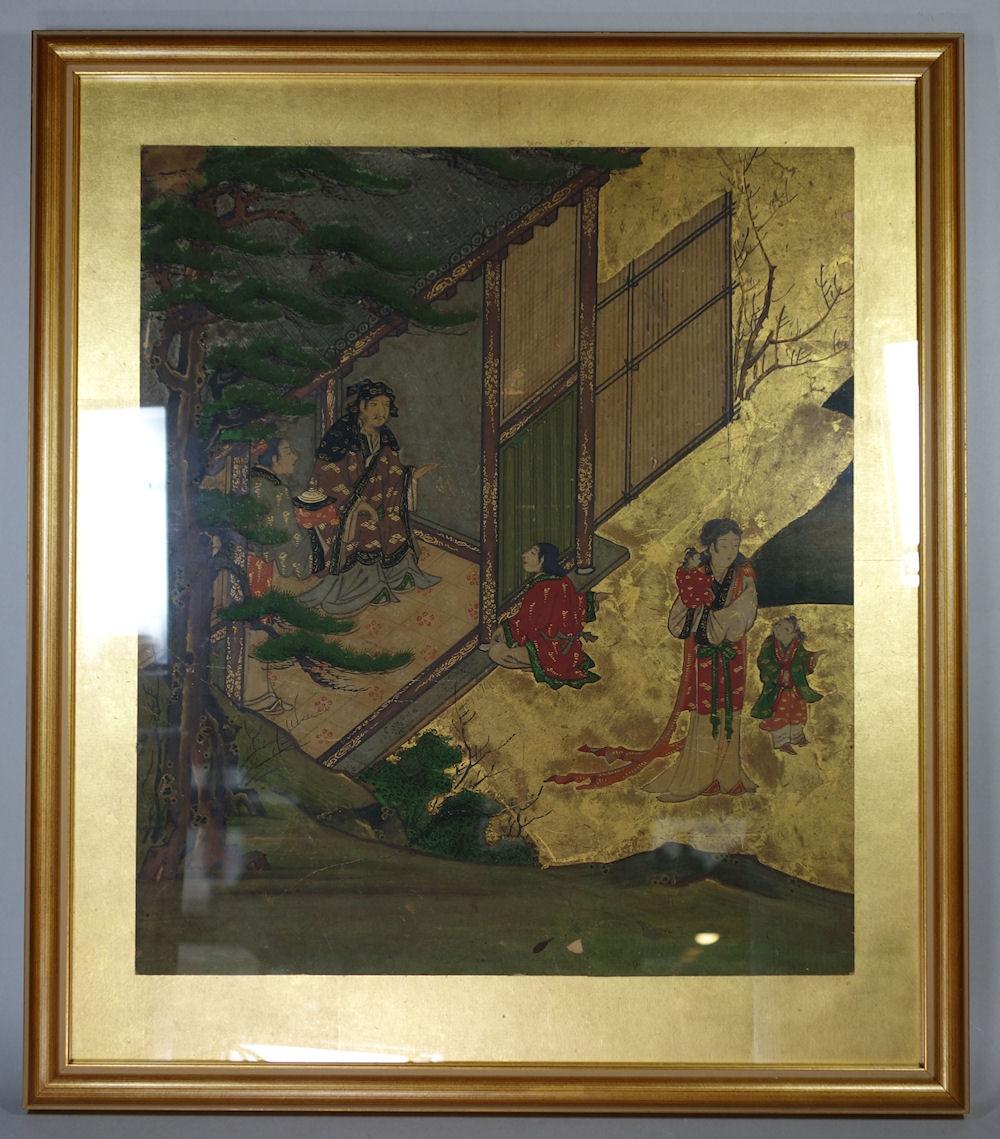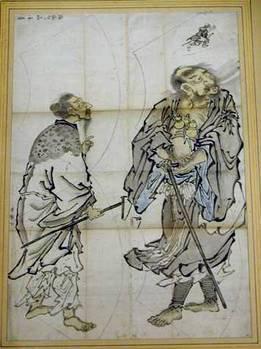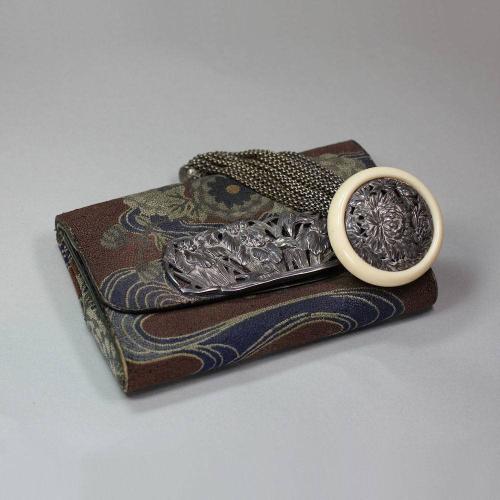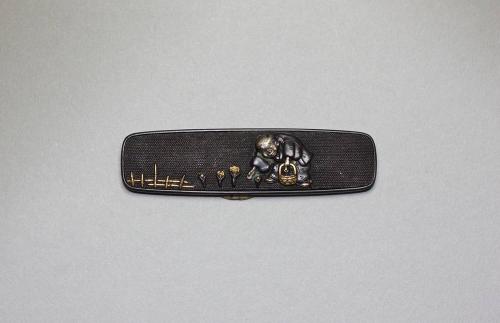

Price on application
This object is eligible for a Certificate of BADA Provenance
The BADA Standard
- Since 1918, BADA has been the leading association for the antiques and fine art trade
- Members are elected for their knowledge, integrity and quality of stock
- Our clients are protected by BADA’s code of conduct
- Our dealers’ membership is reviewed and renewed annually
- Bada.org is a non-profit site: clients deal directly with members and they pay no hidden fees
Japanese Kano school painting, 17th century, in ink against a gold leaf background, depicting Min Sun kneeling before his father, who is seated inside a room that opens out onto a garden with rockwork and pine, the young man gesturing back towards his stepmother, who is standing holding a baby, with another child beside her.
Dimensions of frame: 40cm. x 46.4cm. (15 3/4in. x 18 1/4in.)
The themes and styles of Chinese art have had a signifiant influence on Japanese painting for hundreds of years, with genres including bird and flower studies, Buddhist religious paintings, inkwash landscapes, and, as seen here, depictions of traditional Confucian tales proving especially popular in medieval and early modern Japan. Despite thematic and stylistic similarities to Chinese models, Japanese paintings display a distinctly Japanese aesthetic. Mirroring this wider narrative of influence and innovation, the Kano school of painters, founded by Kano Masanobu in the 15th century, initially adhered closely to Chinese models, contributing to a revival of Chinese influence within Japanese medieval culture. However, over time the school developed a bolder, more distinctive style with firm outlines and brighter colours, as seen in this example. The Chinese text Quan xiang ershisi xiao shi xuan 全相二十孝詩選 (Selected verses on all aspects of the twenty-four filial exemplars) was compiled in the fourteenth century by the Yuan dynasty Confucian scholar Guo Jujing. The compilation of tales outlining the central Confucian concept of loyalty towards ones parents proved extremely influential across Asia and was translated into Japanese as Nijushiko 二十四孝 in the fifteenth or sixteenth century as well as becoming a popular theme in Japanese art. The tale depicted in this painting is 单衣顺母, dan yi shun mu (He Obeyed His Mother and Wore Thin Clothes). It tells the story of a young man called Min Sun, whose mother died when he was young. His father remarried and had two further sons. Min was maltreated by his new stepmother, who favoured her own sons over him at every opportunity. As the cold winter approached, the woman prepared warm coats of cotton for her own two sons, preparing merely a coat made out of reed catkins for her stepson. His father was unaware of this and became enraged when his son, shivering and unable to concentrate fully in the bitter cold, caused the carriage they were travelling in to fall into a ditch. When the father beat his son, his coat tore and the catkins were exposed, and the stepmother's neglect realised. Min's father wanted to expel his new wife, but instead of bearing any grudges against his cruel stepmother, Min entreated his father to be merciful, pleading that his brothers would suffer terribly if she were to leave. His stepmother was so grateful for this undeserved loyalty and his kind intervention that she was never cruel to him again.
Dimensions
Dimensions of frame: 40cm. x 46.4cm. (15 3/4in. x 18 1/4in.)Stock number
Q707DThe BADA Standard
- Since 1918, BADA has been the leading association for the antiques and fine art trade
- Members are elected for their knowledge, integrity and quality of stock
- Our clients are protected by BADA’s code of conduct
- Our dealers’ membership is reviewed and renewed annually
- Bada.org is a non-profit site: clients deal directly with members and they pay no hidden fees




